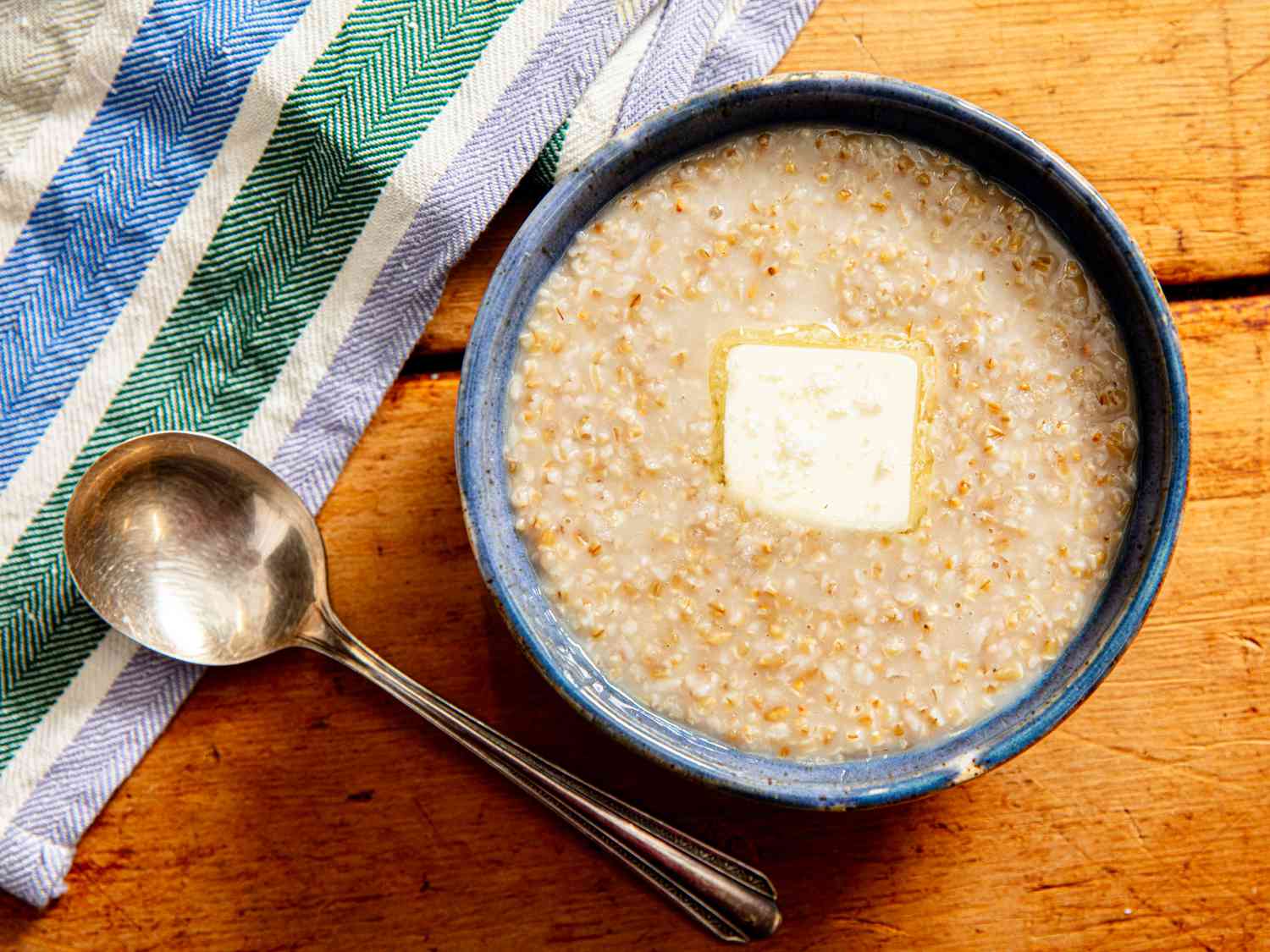Why It Works
- Optionally toasting the oats deepens their flavor.
- An optional overnight soak speeds up cooking the next day.
- Gentle, frequent stirring releases just enough starch to thicken the oatmeal without making it stodgy.
Oatmeal can be a lavish affair, laden with milk or cream, topped with flowing rivers of butter, drizzled with honey or maple syrup, garnished with fruits, and mounted with nut butters and pastes. I love oatmeal like that, and have recipes like a bananas foster–inspired oatmeal with peanut butter and a rich and creamy milk-based oatmeal. But oatmeal doesn’t have to be chock full of those kinds of things to be great, and if you want proof, look no farther than the Land of Oats itself: Scotland.
I have no idea if the Scottish would agree with this moniker I’ve bestowed upon them, but unless they’d prefer I call them the Land of Fried Mars Bars, I’m sticking with it. Also, our new AI overlords agree with me: When I asked ChatGPT which country it would guess I was referring to with The Land of Oats, it replied, “My best guess would be Scotland. Scotland is renowned for its oats, which are a staple grain used traditionally in various Scottish dishes, most notably porridge and oatcakes. The climate and soil conditions in Scotland are particularly well-suited for growing oats, making it a prominent part of the country’s agriculture and culinary traditions.” So, as we all know, if AI says it, it’s true.
The Key Ingredients in Scottish-Style Oatmeal
Anyway, back to oatmeal. Classic Scottish oats are made with three basic ingredients, and two of them—water and salt—hardly even qualify when playing the recipe publication ingredient counting game. So that leaves the oats as the only main ingredient, which means I could declare in a headline that These One-Ingredient Oats Are Better Than My Wildest Dreams and maybe get some attention on Google Discover. (I’d get vastly more attention if I wrote Taylor Swift Says This Ina Garten Recipe for Scottish Oats Is the Best Breakfast Ever, but they have nothing to do with this recipe so we’re not gonna go there.)
Up until this moment I’ve not mentioned the butter, but it is an optional topping, along with some beautiful flaky sea salt. I’ll be honest, though, it’s not an optional topping for me because the butter makes it. As they say quite rightly in Scotland, “Give me that pat of golden butter on my porridge or give me haggis.”
Tips for the Perfect Bowl of Scottish Oats
As for the cooking method, here are the most important techniques and details to pay attention to:
- You do not need a spurtle for this. A spurtle is a traditional Scottish oatmeal-stirring implement that others would identify as…a stick. I own one and I get a big kick out of it, but I’ve done side-by-side tests stirring with a spurtle and a wooden spoon and I can’t detect a lick of a difference.
- Use steel-cut oats, not rolled oats, and toast them if desired. This oatmeal is correctly made with steel-cut (also sold as “pinhead”) oats, not rolled or instant oats. They take longer to cook, but they’re nuttier and produce a much better texture. You can dry-toast them for a deeper, lightly roasted flavor; it’s a nice touch that only takes a few extra minutes. (Don’t burn them!)
- Save time with an overnight soak. While there’s no requirement to think about breakfast the night before, you will save time in the morning by waking up to a pot full of oats that have been sitting in the water while you slept. Once fully hydrated, they cook up much more quickly, saving you a good ten to 15 minutes on the total cooking time.
- Salt matters. Add a bit of salt to the oats and water before cooking will make all the difference in the oatmeal’s final flavor. It shouldn’t be too salty but it should taste seasoned. Finishing the oatmeal with a few large crystals of flaky sea salt is also a worthwhile move.
- Stir gently. While the spurtle doesn’t matter much, how you stir does make a difference. Stir too little and you could end up with scorched oatmeal, thin and watery oatmeal, or both. Stir too rapidly, and it could turn into a pot of oat glue. That’s because the stirring motion loosens starches from the oats and disperses them throughout the pot, thickening the porridge in the process. With gentle and frequent stirring, you’ll get oats that are plump and suspended in a creamy glaze, neither thin nor cement-like.
- The recipe says the butter is optional, but it’s not. I know I already told you this, but I’m telling you again because I mean it. Eat the butter, enjoy the butter. If you must skip butter, consider a bit of cream instead.


